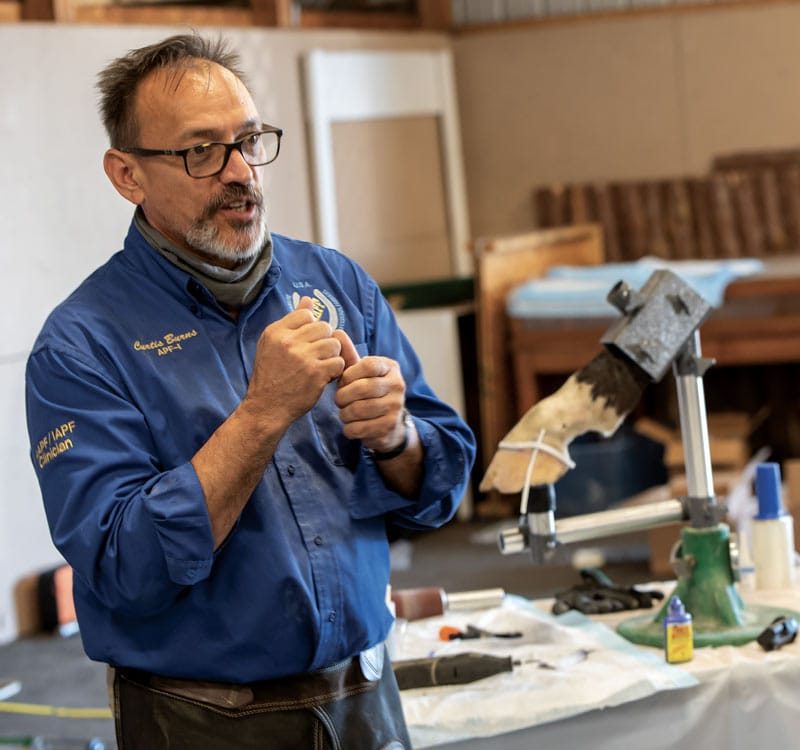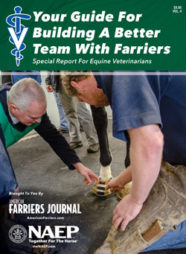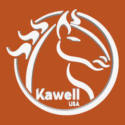Pictured Above: Wellington, Fla., farrier Curtis Burns says it is crucial to not overbook clients so you can pursue opportunities in developing your career.
Farrier Takeaways
- Prospective clients may have a perception of you and your work before you see their horses.
- Determine and prioritize the standards by which you will evaluate potential clients.
- Your goals in client improvement may not be possible without recognition of market limitations.
Many factors have contributed to Curtis Burns’ success as a farrier over the past 25 years. However, he says one simple rule had the strongest influence on his business.
“I never took on a new client who wasn’t as good or better than my best client,” says the Wellington, Fla., farrier.
This quick way for evaluating a client before letting them join your practice can help your business progress. Looking back at his various careers in the equine industry, Burns shared some considerations for applying this rule.
What Reputation Do You Want?
As someone at the beginning stage of establishing a farrier practice, you may think, “Easy for you to say,” when reading the advice of veteran farriers. But remember, every successful farrier started where you are now.
I never took on a client who wasn’t as good or better than my best client …
Today, a manufacturer and well-regarded farrier who has worked with top horses like Justify, Mucho Macho Man and Curlin, Burns didn’t begin his career working with these champions. Before becoming a farrier, he rode as a jockey starting at age 15 in the Central Plains. With success, he landed on the East Coast and Florida, riding and eventually training horses. As he developed his shoeing skill, he became a full-time farrier in 1995. But those early days on the track working with racing Thoroughbreds and Quarter Horses showed Burns that client perceptions of you and your work can be powerful.
“When I was young, I had a reputation of being able to ride tough horses,” he says. “A trainer once said that if he could put a saddle on a horse, then I would be able to ride it. I realized that I rode these horses because I was the only one willing or able to ride them.”
Burns says that his work with tough horses put him in dangerous situations. Your body is your most important asset as a farrier. It isn’t hard to see how working with tough horses as a jockey or farrier can lead to an unplanned early exit from either profession. Applying this rule before taking on new clients can be a factor in building a better reputation over time.
“Best” is Relative to Your Practice
Defining “best” will differ for each farrier, and likely be influenced by multiple standards. The priority of criteria for evaluating your prospective clients also will vary. You have to find what is paramount for you and your business goals.
One measurement for a good client is that they pay prudently for your work. As a trainer, Burns quickly learned that some clients on the track would become difficult payers, if they paid at all. This became a top criterion for his practice. By the time he switched to farriery, this standard was firmly part of his client evaluations. He would turn down offers of work from trainers who had poor reputations for payment.
“Shoeing horses is hard enough,” he says. “The last thing I was going to do after I was bent over working on horses, was stand up and chase after money. This paid dividends. I wasn’t working for free. And when opportunities arose, I could take them because my time wasn’t spent chasing money.”
Burns explains that networking is crucial for success, especially on the racetrack. So the opportunities for finding better clients would come simply from standing at the rail and having a cup of coffee with a group, meeting new trainers and owners. These occasions were less frequent if the time was invested in getting money from delinquent clients.
Conversations among others often get me my work…
Finding opportunities is crucial for the new farrier, according to Burns. He warns about working so much that you can’t attend horse shows and other equine events so you can network.
Building revenue is important because this is your business, but it isn’t the only measurement for evaluating clients. Burns says that he likes winning, so wants to work with owners who aren’t just good payers, but have a drive to succeed as well. Also, he advises not taking on clients from only one discipline, but to diversify your practice.
He says it is important to pick clients that align with your goals and ethics. Burns says his practice has been built on word-of-mouth referrals. After working for 2 years with a high-end client, including helping her horse recover from a difficult injury, he realized she had never discussed his ongoing, successful work with others.
“Conversations among others often gets me my work,” he says. “If I feel a client isn’t someone who would have my back and propel me forward, I need to replace that client.”
Understand that successful management of client criteria may not be possible without adjustment. For example, if you want to work with high-end show horses, but also have set hours for your week, you will need to tweak your plan. Burns acknowledges that as he shifted the majority of his farrier work from race horses to show horses, he had to modify his expectations relative to that market.
“If you want that top client, that may mean answering your phone at a time you don’t really want to,” he says. “So what you have to do is not overload your book with horses so that when those clients call, you can address their needs. You have to charge them enough to have the income level so you won’t be overbooked.”
Many other factors, such as location and disciplines will influence your business development. Burns’ rule of not taking on a new client who isn’t as good as your best client is applicable to any practice. With the challenges of your first few years in the trade, this will be an easy way to measure the progress in improving your clientele.
Let Your Work Do Your Talking
One pet peeve of Curtis Burns is when a farrier unnecessarily criticizes the work of another. This is unprofessional and will result in earning a poor reputation among peers. When it comes to someone else’s work with a horse, there is too much unknown information about the case, especially where the horse is at in its trimming cycle.
“If you think you can do a better job, step up and prove it,” he says. “If you do good work, you won’t need to speak up, your work and clients will do it for you. You will go a lot further when you are humble. Turn your ego down because the next horse that you work on could go poorly.”







